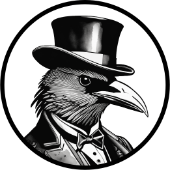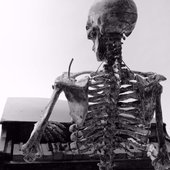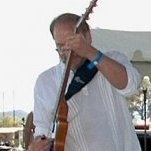Search the Community
Showing results for '"drop out"'.
-
I have a weird problem. When I start Cakewalk it appears in the task manager - until a project loads. Once any project or even a blank new project is loaded it disappears. But then, when I exit Cakewalk - it reappears. Then many times it won't go away until I manually end the process. After a project loads and Cakewalk disappears from the task manager, Windows will run programs that usually only run when nothing else is running. That, of course causes Cakewalk to run slowly and/or drop out often. It's as if Windows doesn't know Cakewalk is running. I am running Windows 11, but it also did the same thing on Windows 10 before I upgraded. Anybody else having this issue? Any ideas? Any existing threads about it I may have missed?
-
Does this happen with a new, empty project? Try creating a new project and adding one MIDI track and recording a couple of notes. Does it drop out immediately? Try bypassing all FX (see Mix Module). Does it still drop out? What Audio Interface are you using? External, onboard, RealTek Audio? Etc? What driver type? ASIO? Are you using ASIO4ALL? What are the buffer settings?
-
I would drop out some of the these instruments during the vocal part, they would have more impact then when they come back. Drums seem a bit wrong for rap. Too rock style. Need more definition, not exactly sure how to describe it.
-

DEAL EXPIRED Karanyi Minipool Synth Plugin FREE!!! REG $49 USD (with code)
pseudopop replied to PavlovsCat's topic in Deals
I don't consider this a duplicate deal / double post, since Zolton's post was in a thread about Minipol Pro. I would have completely missed this offer if you hadn't made a new topic, so thank you, Peter. Since the topics sometimes drop out of sight faster than the end credits of an average tv soap, I don't mind if some deals get posted twice. If I've seen it before, I can just ignore it. If not, I thank the poster for double posting and bringing it to my attention. -
@jack c. An easy way to create some dynamic variation is to have instruments drop out and/or add some reverb so that some seem 'further" back in the "room".... Having a spot where the vocal is only supported by a "thin" sounding instrument, will make the re-entrance of all them sound bigger and dramatic. Simply having your choruses be bigger/louder than the verses is the main way to get some variety. Creating a middle that's bigger or much smaller sounding will make it stand out from the body of the track, too. Using automation to bring things to the foreground (of the listener's attention), like moving the high hats up or down/back, bringing in a certain guitar here or there is always good mixing technique. The things to change are frequencies, tonality, arrangement, panorama, depth etc. have a spot with just bass or something high and ephemeral have a spot with no bass and another with no drums etc have things on far left/right drop out to "showcase the center" or vice versa Like drummers used to switch to their ride cymbal for the chorus or the bell for the biggest section of the song, use more or busier sometimes and less or quieter in between...... Michael
-
Load balancing causes play freeze. When I play my 96khz 24 bit projects with load balancing on Cakewalk will stutter drop out and stop. It never used to do this before. If I take load balancing off it plays fine. Any ideas on this? It doesn't happen on 48khz 24 bit projects. Even when I change my RME Fireface UCXII interface latency it still freezes.
-
Hi folks. I asked similar question before, but perhaps rephrasing it will get me going in the right direction. One of the interfaces that I use for sketches is Apogee One. Here is the issue; when I mix a larger project with all kind of Vsts, I get a *drop out/ Stopped Audio engine" occasionally and that is expected. What is not expected is when "Stopped Audio Engine" occurs, interface output becomes severly distorted. I hear everything through a very loud hiss type noise. It continues to be like that on stop /play... The only solution that I found is changing buffer on device up OR down, that somehow refreshes the driver and playback resumes normally. This does not happen with my recording interface of different brand... I mean it might also not handle the VST load and I would get a "Stopped Audio Engine", but it would snap back to normal playback, without me tinkering with buffers or anything else. Just transport Play/Stop will cure it. Apogee One does not "cure" by itself. I have 2 Apogee One units. Same behaviour. I use max buffers 2048 plus Safe mode is on (I tried with Safe mode off, makes no difference). I patiently waited for driver update for a long time, which finally came out couple of month ago. It did not solve the issue. Apogee has no desire to look into it. Any clues how this can be solved without changing buffers back and forth? Thank you! while in a
-
Exactly. For complicated set ups you need better audio gear and an audio interface can easily handle that. On Board laptop sound is very limited in connectivity and by the time you hobble together a bunch of cheap adaptors that money is better spent on the correct device. Below is the script for the video I made about interfaces. It only got a few views on You Tube so I removed it. Shopping for an Audio Interface? There is a lot of choices. But before you start looking Make a list of your requirements first. Example you might determine you need a 4x4 interface. That just narrowed down the search by a lot! You might only find 12 models and a few of those might be way out of your budget. Now compare those to get the most features needed. Don’t cheap out. Get what you need now because it’s false economy to short change yourself on features. You’ll end up spending more money down the line to make up for it. Example, only 1 headphone output and you all of a sudden need 2. Now it will cost you another $100 or more to buy a multi channel headphone amp. What kind of connectivity do you require? and how many of each. This is the most important determining factor. Most of us only need a few in/outs. It’s nice to not have to unplug and plug stuff in. If you already own a mixing board you can most certainly get by with less. These are some of the connectivity options: XLR for mikes & 1/4" for instruments or better yet Combi jacks which are both. Then other options are RCA, ¼” line level, ¼” Instrument level ,MIDI, SPDIF, ADAT, MADI Especially MIDI jacks if you use vintage synths, drum machines or pianos. How many ins and outs do you think you'll need now and in the future? Are they accessible or are some on the rear panel? Are the ¼” jacks Balanced? RCA jacks are handy if you have a DJ mixer or any consumer audio gear. And sometimes there are RCA in Parallel with main outputs. Just make sure the outputs have connectivity that matches your studio monitors. Is there a true stereo input pair? Some don’t have matching inputs which sucks for recording stereo devices like guitar pedal boards, Hardware piano’s, synth and drum machines. Are there channel Insert jacks for using hardware compressors. What type of connection to your commuter does it use. USB 2 is all you need for up to 32 channels of audio streaming. But USB 3 is now the most common. Here is some of the other front and rear panel features to look for Are there peak level meters or just a little LEDs for each input? Do all inputs have a peak indicator? Are there separate controls for Monitor level and headphone level? This is a pain when they combine these two. Is there a blend control for mixing Input Source with Computer or DAW playback. A lot of cheaper interfaces are missing this important feature and only have an on/off toggle. This makes it difficult to adjust what you’re hearing in your headphones and you have to muck about in your DAW to fix this. I think this control is a overlooked important feature. How many Headphone jacks? A level for each? This is also important if you work with other musicians. And as I said it is cheaper to have it built in that having to go buy the additional hardware. Are the input pads or line / Instrument toggle switches on the front, back or software controlled? Having them hidden is a bit of a pain because you might even forget they exist. Is it a metal box or cheap plastic? Is it light and portable or large and bulky, Rack mountable? If you’re going to take it with you make sure it is road worthy. Does it have an on / off switch? Many don’t. I use this a lot because I might change from on board audio to my interface. Much easier to turn off a switch than unplug it. Does it use Buss power or a power supply? Look for at least an optional power supply. Buss power can have issues with noise and Phantom power and some need a dedicated USB 3 buss. I had to purchase a special PCIe card just to power my Motu m4 and that cost me 40 bucks. Does it have DSP effects built in? This is great for adding reverb to you headphone mix without actually recording it. And there might be a compressor and special guitar effects you do want to record. Once again it’s saves you money if you will need these things. Does it use a Software GUI mixer? Having a software mixer adds more monitoring options. My Focusrite 6i6 has a mixer and I can use it to create 6 different headphone Que mixes. Does it have a Loop back function. This is a newer feature that is real important if you do live streaming, screen captures, Zoom or stand alone VST recording. It will also record off the internet say from you tube or sites that won’t let you download. Ahrr Captain there’s Pirates a float. Do you need low Round Trip Latency for real time processing like Guitar Sims? Most average priced interfaces like Tascam, Steinberg, Pro Sonis, Scarlett’s and my Motu have around 10 ms of RTL at a working Buffer of 256. You might get this lower if you have a very fast computer but most of us will have around this amount of delay. This delay is very annoying to most of us so be warned. Low RTL is going to be at a higher price point. Probably over $500 like RME stuff. There is almost no information or specs supplied buy most manufacturers. They will tell you up to 5ms of RTL but they are not getting that at a buffer setting that is actually usable on most systems. You’ll suffer drop out and stuttering. Zero Latency monitoring is not the same as round trip latency All interfaces have latency. The A/D converter adds almost 1ms of latency for starters, your USB system, computer processing the D/A converter and so on. But this doesn’t matter when you use direct monitoring. You’ll hear everything in perfect sync. This is what Latency sounds like DEMO-- Zero latency is only referring to monitoring directly from the interface. And most important of all, Does it have top notch ASIO drivers for your OS. Don’t buy any interface that say’s “class compliant driver” That will work for a Mac, but not very well with a PC. What is the word on support from the company? Visit the web site and try creating an Account before you purchase. Pretend you just bought the device. See if the drivers and manuals are easy to get at and kept up to date. Are they a PC or Mac oriented company. And this one I think is also overlooked-- Does it come with free software, Example Focusrite interfaces seem to come with a lot of good actually usable stuff. There could be over $200 in value here so make sure you check this out. Most companies only give you some lame version of a DAW that you are probably not interested in because you already have a great free DAW with Cakewalk. Everyone will recommend the interface they have chosen, that doesn't mean it is the right one for you. But recommendations are also part of the research needed to make the right decisions. Make your list starting with the input /output specs. Check for pricing on sites like Sweetwater or Musicians Friend. The reviews are a very good resource but take the negatives with a grain of salt. There’s a lot of idiots who have no clue as what they are doing and they vent by writing a negative review. The audio interface is the heart of a digital studio. It is the centerpiece and spending money on this is more important than your actual computer. So have fun shopping.
-

Cakewalk - the only DAW with playback delay issue?
Antre replied to Antre's topic in Cakewalk by BandLab
Ok, delay is normal in CbB on my notebook. Other DAWs in my notebook - no delay. Dosn't meter how much projects are huge. I will get drop out or audio engine crash or program will say that it can read from disk. That proves my assumptions. Thx -
I have a large file (64 tracks). The setup is a full orchestra using EastWest Samples. Tracks are grouped by an instance of instrument track and 8 MIDI tracks per instrument with each MIDI track with each MIDI track having it's own channel (1,2,3--8) Sometimes, certain tracks drop specific notes. on each replay it is the same notes that are dropped, they are not random. It could be the second Eb5 in a melody line in the first flute for example. That same note will be fine in the same track at a different point. There isn't overlap, as I have checked (even though it is a polyphonic instrument with "RoundRobin" playing.) I can rerecord it and during recording it will be fine, but after the rerecording, it may be a different note or notes that drop out. There may also be notes in the rerecording that overlap for legato that play perfectly well. There are also cases where it may be the first note in a melody line after many measures of rests/'tacit'. Even a 50 tick space between the end of the last note and the beginning of the note in question doesn't solve the problem. Freezing the set of MIDI tracks for that instrument group (of 8 MIDI tracks) doesn't solve the problem either. This happens with some of the woodwind instruments and some of the brass instruments. I have not been able to identify the problem. I have tried switching to different samples to get it to work, but that doesn't seem to have any affect. Currently using the 2021.04 version of Cakewalk.
-
Very cool. I love the way that the bassier instruments drop out in the first section transition - great contrast. Nice too that they come back in a gradual build-up. Sounds like it'd go well as a soundtrack to DOOM or something (I mean that in a good way). Well done!
-
Hi, I'm new to this DAW and I have sound drop outs that i cant fix. I have put a few tracks down and mixed them nicely (Purely volume and EQ), and then Cakewalk stopped making sounds. Cant hear a thing, however the program seems to be running fine. Windows sounds works fine with everything, - just not with Cakewalk anymore. Things I have tried (might not use correct terminology); 1- Changed playback buffer size (to them all), (Was set at 256) 2- Changed Driver mode (to them all), (left on WASAPI, tried MME) 3- Applied, saved, reloaded Cakewalk everytime, 4- Checked every forum on the internet (including Youtube), 5- Made sure windows and cake walk use same Sample rate, 6- Disconected all (besides main) devices in windows, 7- Probably other stuff I forgot to mention (but willing to try again), Also, It was working fine, then just stopped (I presume with a drop out message), however at the time I did not know to look at the error number and look up the link to the documentaion - (I found that out while tring to fix the issue). I dont know how to find out what error number it was. This issue IMHO is an error that should never happen on audio software, Its like an error that stops the display on a graphic editor. There should be a failsafe since this error renders the software useless. Enough ranting from my frustration.... So does anyone have any ideas? or was my mum right in saying that I was unique to everyone else in the world?
-
One thing I just had happen because I was working on videos and using 48hz, Cakewalk would drop out when switch back to 44.1 or I loaded a 44.1 project. So is it possible your interface is having to change sample rates? This shouldn't happen but it is a possibility. If your projects are 48 and your exporting to 44.1. But as said this is off line and shouldn't matter. But it might explain the drop out and why the export is unaffected. I don't think the export uses your ASIO driver or the audio engine. But if it's converting??
-
Thanks for following up and thanks for asking. I had at least two files open with different midi clock sources and switched between the open projects from the Windows drop-down menu. One was set to use midi sync, the other set to use audio. I confirmed that at least twice today before posting my question. Later in the day, I got a code 13 dropout; I am not sure what prompted that. (I dealt with it and moved on.) I will see if I can replicate it now with the code 0. Results of quick test: With three specific files, after switching I got code 13 four times. With two of the files open, I got code 0 four times when switching. It is possible that something within those files other than the midi clock source makes a difference as to which dropout code I get. BTW, when I consider having two projects open at the same time with different clock sources "User Error" (i.e., not a bug). Easy fix: Don't do it! Update: Currently narrowing down possibilities when switching with the two-files loaded. Drop out code 0 seems to happen when I switch with the transport off (not playing back). When playing back just not (several times), there was no audio dropout, though there was a consistent audible glitch. (Dropout Msec = 250) It is possible the code 0 comes from (1) Cakewalk not receiving midi clock (i.e., not being sent) and (2) the transport being stopped. To be tested. Update: I need to sort this out for my own needs (real-time performance stability), so I will be doing further testing, probably tomorrow. But for now, I can get audio dropout code 0 both when my external clock source (1) is and (2) is not transmitting midi clock. This is prior to putting Cakewalk into external midi clock standby mode (i.e., prior to pressing play on the transport and getting "Press <Esc> to cancel. Waiting for MIDI Sync.") Once in external midi clock standby mode, the Window drop down menu is disabled, so no switch can take place until after the transport has been started from the external source. Then an external stop command successfully stops the playback, Cakewalk goes back to midi clock standby mode, there is no audio dropout, etc. as expected.
-

Transport module not Working, not playing any of my song
scook replied to William Kristen's question in Q&A
The drop out message has a code (16 in the image above) and a link to the help in the lower right. Click on the help and it opens this page http://www.cakewalk.com/Documentation?product=Cakewalk&language=3&help=NewFeatures.53.html listing the codes, cause and action to take. In order to provide more assistance requires much more information about the hardware (PC specs and audio interface), OS, DAW version and setup info such as driver mode, interface buffer settings , the drop out code and details about the project. -
This, exactly. To be Larry's friend in this space is to allow and expect him to drop out as he pleases, for whatever reasons, just as we all get to do. And I'd go just a bit further, asking hey is there a psychological downside to hunting and posting deals all day? Not for me to say what floats another's boat, but that's a whole lot of time spent wrapped in a cyberscape, isn't it? I know for myself, and have seen it in others, too much webbery gets us stuck, wrapped up, poisoned. It's called "doomscrolling" for a reason. So bravo Larry, thanks for what you give to this group. I am eternally grateful! Let your time here be the "break" from whatever else you find more important in life.
-
I've been having this problem for a while , and I think I finally solved it. Some of my songs would drop out make noise, and my thread monitors would go through the roof after a few minutes of mixing down to mix down computer. I tried changing the setings to my Motu AO24 , but the results were the same. Finally while Cakewalk was running I did something I never tried before. My audio files are on my SSD "F" drive. I called up the Task manager (alt/ctrl/delete), and clicked on the performance tab. There was no or little activity on my "C" drive. Right before the problem started, the activity of my "C" drive maxed out, the audio noise started. I then stopped everything and after a few minutes, the "C" drive maxed out itself again, reading and writing. When Cakewalk was playing with all the plugins, I was only using about 7% of my 128GB RAM, and my audio drive was using 6 to 15% of it's resources, I think I narrowed it down to having the automatic defrag on. I turned it off and the "C" drive shows no activity, except from the ethernet, which I may turn off while using Cakewalk. So if I have problems in the future I'll watch , for programs running in the background with the Task Monitor from now.
-

audio engine Take Lanes cause Audio Engine to Crash [FIXED]
scook replied to FIP GeBall's topic in Cakewalk by BandLab
Yeah, the current help is hosted on the old Cakewalk server which BandLab acquired. The web-based help is updated with every release. The drop out codes were added in 2019.09 If you prefer, there is a pdf of the help in here It is not updated as regularly as the web-based help though. Good news - easy fix especially with the addition of the drop out codes -

audio engine Take Lanes cause Audio Engine to Crash [FIXED]
scook replied to FIP GeBall's topic in Cakewalk by BandLab
There should be a toast message containing a drop out code and a link to the help page about the drop out codes. It may not be any particular track/lane. It is not clear if leaving track 57 alone and archiving other tracks solves the problem too. -

Severe dropout and static during playback and recording.
Heb Gnawd replied to Heb Gnawd's topic in Cakewalk by BandLab
Hi Tecknot, thanks for your response. Sound card sample rate is set to 4800 Mhz, buffer size is 256, Cakewalk is set the to the same sample rate, using ASIO Mode my understanding is that the bit rate is fixed at 24. Usually when there is a conflict I hear a tick as the project opens and realize that Cakewalk has reset my sound card to match the project configuration. I'm not sure how to set sample rate in Windows, my Windows sound settings defer to the device selected. Drop out and static occurs also with brand new project files with nothing more than a single audio track, but the more severe blue screen drop outs are from heavily packed projects with many virtual instruments. In such cases I have gone through the project deleting track by track to observe changes, for a while I was thinking there was a problem with one of the libraries. There could very well be more than one thing going on here. But I've never found a clear identifiable culprit. Regards Heb- 10 replies
-
- dropout
- static noise
-
(and 1 more)
Tagged with:
-
Looking at the 3rd screen shot I see the #1 spot is ataport.sys. I googled this and there sure is a lot of issues with audio ( on board) and hi DPC due too this driver. Not sure what is actually does there's not much about that part. But when I run Latency monitor on 3 of my computers I don't have that. But I did get interesting results on each. my main DAW no surprise it stays in the low green even with the wireless internet on. I fired up the old Silverstone which I'm just in the process of adding software. It is only fresh out of the box and it's looking pretty bad. This is vintage 2008? and all the hardware was top notch in it's day but W10 struggled with some of the drivers. This is a fresh install of W10. I'm not even sure how far we should trust Latency monitor as far as it's report and what to do. It always say's the same thing about CPU throttling and when I check it's always disabled by default ( I certainly didn't do it) I also ran Latency Monitor on my Laptop I use for remote recording. Its W7 , i5 8GB RAM and works great. But It also showed a hi DPC count due to yet another system driver. Sorry no screen shot it's off line and doesn't have one drive or drop box. But the point I guess it makes is if it's showing nasty DPC count and your having drop outs then at least you sort of know why. This ones my Office computer I just re built with a new SSD drive and a fresh install of W10. Seems we share a common ground here with the NVIDA driver wining the DPC race to the front.
-
Dear All, I use a audient ID 22 since a couple of years. The sound is amazing. But unfortunately it`s unusable for my audio productions at the moment. I switched to Cakewalk by Bandlab some time ago. No matter what I do the audio is crackling and droping out. I tried everything obvious like changing the buffer size, updates, freezing audio tracks and so on, but nothing helps. I even bought a new Laptop with a AMD Ryzen4700U processor and 16 GB RAM because I thought the problems came form a too slow computer. But still the same crackling occurs continuesly. Even with the CPU at 50% its crackling. As I read in the cakewalk forum there are similar problems for other Audient (especially EVO) users. Apperently it`s the audient driver. I just updated mine without any effect. Could you please assist me? I really want to continue using my beloved Audient ID22 and the now familiar great Cakewalk DAW. Kind regards from Würzburg, Germany Earl Sebastian
- 16 replies
-
- audient id 22
- audio drop out
-
(and 1 more)
Tagged with:
-
If I was given this to mix, in the beginning: A little more reverb on the vocal Lower piano level Organ way lower Bass part sparser Overall, what you’re hearing is too many parts competing for space, and there’s not enough variation of instruments weaving in and out. It's mostly an arrangement issue. Drop the bass out at 2:00, organ down, hand percussion (tambourine, shaker, etc.) to maintain the beat. Then at 2:15, have those drums pump!! Give them some serious limiting, boost the level, and a reverb splash to lead into the next section. Bring the bass back in for the next section. Then decide which other instruments you want to have predominate in this section. A harmony vocal would be cool...at 2:30 start dialing back the instruments, to reduce the density. The change at 3:00 is most welcome, but again, drop out the bass and use hand percussion until the drums come back in. At 3:17, I’d lose the synth figure which is almost anti-majestic, and use a sustained choir sound, which would add majesty. The TTS-1 is fine for that, it’s actually quite good. At 4:00, you’re getting the right idea - you’ve pulled back, and emphasized the voice. Less is more. Just ask Miles Davis Finally, for the vocal, do the phrase-by-phrase normalization technique I’ve talked about numerous times. You’ll love how your voice sounds, especially after you limit it. So...If you get a chance, listen to my latest single: You’ll hear the kind of contrasts I’m talking about. The intro has power chords, keyboards, heavy drums, etc. But the first verse starting at 0:20 is only voice, guitar, bass, and drum toms. Very basic, but that’s all that’s needed. At 0:48, keyboards and more vocals creep in. Then the power hits at 1:07 with the Chicago blues harp solo. But here’s the most important part: at 1:22, note how after that excess of distorted guitar, blues harp, and heavy drums, it dials back to only vocal, acoustic guitar, and tambourine way in the background. This essentially "reboots" the song, so I can build it back for impact, which happens at 1:50 with the extended section and DJ-style FX break. At 2:00 the song returns to full instrumentation, but to take it up another notch, it’s not about adding more instruments or changing levels, but going from 2- to 3-part harmonies. Then at 2:23, EVERYTHING drops out except the vocal + harmonies – an old country trick applied to rock. Then from there to the end, it’s back to Chicago blues harp, a more animated bass, louder drums, etc. on the way out. One exercise you might find helpful – when doing a final mix, I’ll mute tracks. If the music doesn’t sound worse, I leave it out. If you remember only one thing from all this verbiage, it’s this: The fewer parts that are playing, the more importance the remaining parts assume. Hope this helps! You're well on your way.
-

How to assign mod wheel & expression pedal
User 905133 replied to jkoseattle's topic in Cakewalk by BandLab
(1) This is an old thread. (2) It might be confusing because you are reading the results of problem solving over a span of 3 months at a single sitting. (3) Based on (a) your newness to Cakewalk (and possibly MIDI) and (b) the lack of details, it might be better to start a new thread. Also, I know that there are other threads that address mapping and using MIDI data that might be better for you. Also, I highly suspect there are video tutorials that might be better for you. BUT, here goes. I am assuming you understand (1) your MIDI gear (a) hardware and/or (b) soft soft synths, (2) what midi data is and how it is used to communicate, and (3) what CCs are and how to use them, including mapping and routing in general, and that your only issue is how to route MIDI in Cakewalk and how to get CCs from one place to another in Cakewalk. As you presumably know, MIDI is data, not sound. Assuming you have an instrument track (which combines audio and midi and is often used for soft synths) and you have successfully recorded MIDI data which produces sound though a soft synth, to me this sounds like you want to record a layer of MIDI data using the mod wheel so that the soft synth responds to the additional MIDI data as well as what was previously recorded. Is this close? Did you look at the event list to make sure the Wheel data was recorded and if so, was it recorded in the right place? Old school personal preference (different people have different workflows): When I overdub CC data, I usually use a separate MIDI track, mostly because its easier for me to edit or delete if its not what I want. To do the CC overdubbing, I point the midi track to the synth (hardware or software). Since there are newer methods, I will drop out here and let others chime in with other methods. I hope that some of what I guessed at about what you are doing (whether correct or incorrect) helps. -

Stopping drones with a Korg nanoKONTROL 2...
User 905133 replied to msmcleod's topic in The Coffee House
I used nanoKONTROL1, to start and stop drones. Its easy! Just assign buttons as toggles for note events. Press once (On) to start a drone, press a second time (Off) to stop the drone. ? Usually had a descent release so the drone didn't didn't suddenly drop out abruptly. ?













